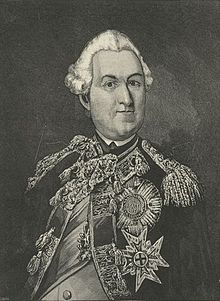
Back ريتشارد كوت ARZ Richard Coote, 1. Earl of Bellomont German Richard Coote, I conte di Bellomont Italian リチャード・クート (初代ベロモント伯) Japanese Кут, Ричард, 1-й граф Белломонт Russian
The Earl of Bellomont | |
|---|---|
 Engraved portrait of the earl, c. 1888 | |
| 12th Governor of the Province of New York | |
| In office 1698–1700/01 | |
| Monarchs | William III and Mary II |
| Preceded by | Benjamin Fletcher |
| Succeeded by | John Nanfan (acting) |
| 2nd Governor of the Province of Massachusetts Bay | |
| In office 26 May 1699 – 17 July 1700 | |
| Preceded by | William Stoughton (acting) |
| Succeeded by | William Stoughton (acting) |
| Governor of the Province of New Hampshire | |
| In office 31 July 1699 – c. 15 August 1699 | |
| Preceded by | Samuel Allen |
| Succeeded by | William Partridge (acting) |
| Personal details | |
| Born | 1636 Ireland |
| Died | 5 March 1700 (aged 63–64) or 5 March 1701 (aged 64–65) Province of New York |
Richard Coote, 1st Earl of Bellomont (sometimes spelled Bellamont, 1636 – 5 March 1700/01[1]), known as The Lord Coote between 1683–89, was an Irish nobleman and colonial administrator who represented Droitwich in the English Parliament from 1688 to 1695. He was a prominent Williamite, supporting William III and Mary II during the Glorious Revolution.
In 1695, he was given commissions as governor of the English overseas possessions of New York, Massachusetts Bay, and New Hampshire, which he held until his death. He did not arrive in North America until 1698, and spent most of his tenure as governor in New York. He spent a little over a year in Massachusetts, and only two weeks in New Hampshire. His time in New York was marked by divisive politics resulting from Leisler's Rebellion, and difficult and ultimately unsuccessful negotiations to keep the Iroquois from engaging in peace talks with New France. Frontier issues were also at the forefront during his time in Massachusetts and New Hampshire, where lumber and security from the Abenaki threat dominated his tenure.
He was a major financial sponsor of William Kidd, whose privateering was later deemed to have descended into piracy. Bellomont engineered the arrest of Kidd in Boston, and had him returned to England, where he was tried, convicted, and hanged.
- ^ In the Julian calendar, then in use in England, the year began on 25 March. To avoid confusion with dates in the Gregorian calendar, then in use in other parts of Europe, dates between January and March were often written with both years. Dates in this article are in the Julian calendar unless otherwise noted.
© MMXXIII Rich X Search. We shall prevail. All rights reserved. Rich X Search